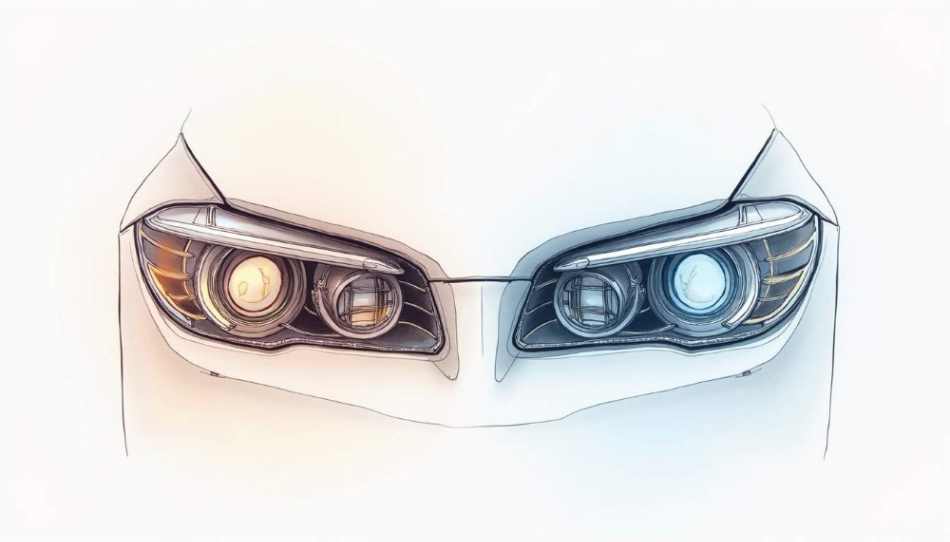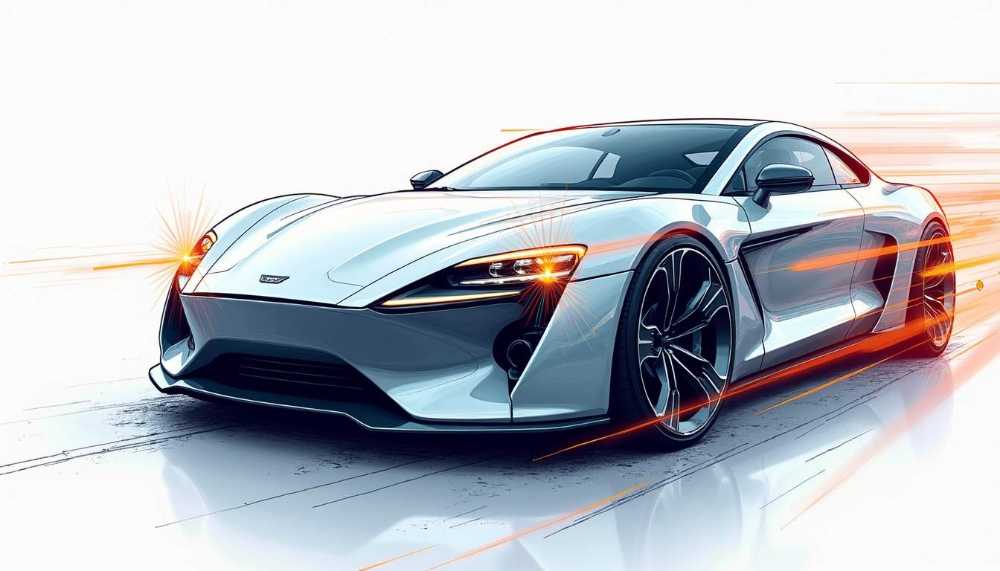The evolution of car headlights has significantly influenced automotive safety, design, and overall driving experience. Over the years, advancements in technology have transformed the way headlights illuminate the road ahead, evolving from traditional halogen bulbs to modern LED options. This article explores the history, types, and future trends in car headlight technology.
Understanding the Basics of Car Headlights
Car headlights serve a fundamental purpose: to provide visibility during nighttime driving conditions and in low-light environments. They not only help the driver see the road but also ensure that other road users can see the vehicle. Understanding the basics of how headlights work is essential for both new and seasoned drivers.
There are different types of headlights, each with its unique features and benefits. The most common types include halogen, xenon, and LED headlights. Each type operates based on distinct technologies and has varying advantages and disadvantages. For instance, halogen headlights are often the most affordable option, providing a warm light that many drivers find comforting. However, they tend to have a shorter lifespan compared to other types, which can lead to more frequent replacements. In contrast, LED headlights, while initially more expensive, offer greater energy efficiency and a longer lifespan, making them a popular choice among modern vehicles.
The Importance of Car Headlights
Car headlights play a crucial role in ensuring safety on the road. They provide illumination, allowing drivers to see obstacles, pedestrians, and road signs in diminished light. Furthermore, effective headlights enhance a vehicle’s visibility to others, reducing the risk of accidents.
In addition to their primary function, headlights also contribute to the overall aesthetic of a vehicle, with many manufacturers designing them to complement the car's style. This blend of functionality and design is particularly evident in luxury vehicles, where advanced lighting technology is often paired with sleek, modern designs.
As vehicles travel faster and road conditions become more challenging, high-quality headlights are essential for maintaining safety standards. Poorly functioning headlights can lead to serious consequences, including accidents and injuries. Regular maintenance, such as checking the alignment and brightness of headlights, is crucial for ensuring optimal performance. Drivers should also be aware of the laws regarding headlight use, as improper use can lead to fines and increased danger on the road.
Different Types of Car Headlights
Car headlights can be broadly categorized into several types. Each type has unique characteristics that cater to different driving needs. The main types include:
- Halogen Headlights
- Xenon (HID) Headlights
- LED Headlights
Understanding the differences among these types is vital for consumers looking to make informed choices regarding vehicle lighting. Halogen headlights, for instance, are known for their warm light and are widely used due to their affordability and ease of replacement. Xenon headlights, or high-intensity discharge (HID) lights, produce a brighter and whiter light, which can significantly improve visibility at night. However, they require a ballast to regulate the electrical current, making them more complex to install.
On the other hand, LED headlights are becoming increasingly popular due to their longevity and energy efficiency. They can last up to 25,000 hours and consume less power than halogen bulbs, making them an eco-friendly option. Additionally, many LED systems offer customizable features, such as adaptive lighting that adjusts based on speed and steering, enhancing both safety and driving experience.
The Era of Halogen Headlights
Halogen headlights have been a staple in the automotive industry for decades. They consist of a tungsten filament that heats up and produces light when electricity passes through it. The halogen gas within the bulb helps to prolong the life of the filament.
What are Halogen Headlights?
First introduced in the 1960s, halogen headlights quickly became popular due to their efficiency and relative affordability. The bulbs produce a soft, yellowish light that provides adequate visibility for most driving conditions.
Despite their popularity, halogen headlights are considered less efficient than newer technologies. They generate a considerable amount of heat, which can lead to reduced lifespan and performance over time. As automotive technology has advanced, many manufacturers have begun to phase out halogen headlights in favor of more energy-efficient options, but they still remain a common choice for many vehicles on the road today.
Advantages and Disadvantages of Halogen Headlights
Halogen headlights offer several advantages, including:
- Affordability: They are less expensive to produce and replace.
- Widespread availability: Halogen bulbs can be found easily in most automotive supply stores.
- Simplicity: Their installation and replacement are typically straightforward.
However, halogen headlights also come with disadvantages, such as:
- Shorter lifespan compared to xenon and LED alternatives.
- Higher energy consumption, which can put a strain on the vehicle's electrical system.
- Subpar brightness and visibility in comparison to newer technologies.
One of the notable characteristics of halogen headlights is their ability to produce a warm light that many drivers find comforting and familiar. However, the heat generated by halogen bulbs can lead to issues such as lens discoloration or even melting if not properly managed.
The Transition to Xenon Headlights
Xenon headlights, also known as high-intensity discharge (HID) headlights, began to gain popularity in the late 1990s. These headlights use an electric arc between two electrodes to produce light, resulting in a bright, white illumination that closely resembles natural daylight.
Introduction to Xenon Headlights
Xenon headlights marked a significant advancement in headlight technology. They provide a bright, focused beam that increases visibility at night and in adverse weather conditions. The bluish-white light emitted by xenon headlights allows drivers to see further down the road.
While more expensive than halogen options, xenon headlights offer enhanced performance, making them a preferred choice for luxury vehicles and performance-oriented cars.
Comparing Xenon and Halogen Headlights
When comparing xenon and halogen headlights, it's clear that xenon offers several advantages, including:
- Brighter output: Xenon headlights produce significantly more light than halogen headlights.
- Longer lifespan: They generally last three times longer than halogen bulbs.
- Energy efficiency: Xenon headlights consume less energy, benefiting the vehicle's electrical system.
However, xenon headlights also come with some downsides:
- Higher initial cost: The investment in xenon headlights can be substantial.
- Complex installation: Xenon systems often require professional installation due to their complexity.
The Advent of LED Headlights
LED headlights have revolutionized the automotive lighting industry. Utilizing light-emitting diodes (LEDs), these headlights produce a bright, efficient light source that consumes significantly less energy than both halogen and xenon options.
The Technology Behind LED Headlights
LED technology allows for a longer lifespan, better durability, and customizable designs. Unlike traditional bulbs, LEDs do not rely on glass or filaments, making them more resilient to shock and vibration.
This technology also allows for more design flexibility in headlight shapes and styles, enabling manufacturers to create unique lighting signatures that enhance the vehicle's aesthetic appeal.
Benefits of LED Headlights Over Xenon and Halogen
LED headlights have numerous advantages that set them apart from their predecessors:
- Energy efficiency: They consume much less power, reducing strain on the vehicle's electrical system.
- Longevity: LED headlights can last up to 25,000 to 30,000 hours, far surpassing halogen and xenon options.
- Enhanced brightness and visibility: The light produced is often more uniform and effective in illuminating the road.
- Faster response time: LEDs turn on instantly, providing immediate visibility.
Future Trends in Car Headlight Technology
Predicted Developments in Headlight Technology
Future innovations may include adaptive headlights that adjust brightness and direction based on vehicle speed, steering angle, and road conditions.
The Impact of New Technologies on Car Headlights
As headlight technology advances, drivers can expect safer, more efficient illumination solutions that enhance visibility and overall driving experience.













